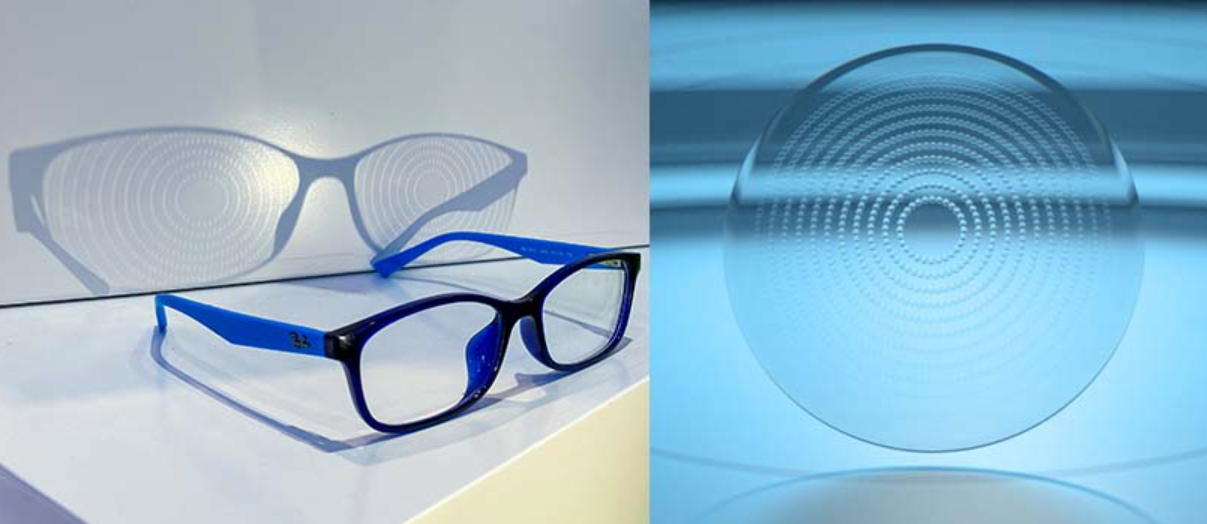 |
|
Though most optometrists employ contact lenses for myopia control, research on ophthalmic lens options continues to show favorable results with this option, too. Photo: Essilor. Click image to enlarge. |
In response to a growing public health problem—myopia—a team of researchers recently investigated a new potential method of controlling its progression. The study used single-vision spectacle lenses with concentric rings of what’s known as “slightly aspherical contiguous lenslets (SAL) technology.” The treatment method was able to improve visual acuity and was well-tolerated in a group of Chinese children. The next phase of the study will assess the lenses’ effect on refractive error to measure any effect on myopia progression.
The prospective, double-masked, crossover, randomized clinical trial included 100 children aged eight to 12 with refractive errors between -0.75D and -4.75D who were split between two groups. Group 1 wore SAL lenses for six months and then switched to single-vision lenses for six months; in Group 2, the order in which the lenses were worn was reversed. Children in both groups had comparable baseline parameters.
The results showed that participants of both groups showed improvement in visual acuity. There was no significant difference between the performance of SAL lenses and single-vision lenses in reducing myopic error.
There was a small but statistically significant difference in patient satisfaction and reported clarity of vision between the two lens types, as observed through questionnaire data. Single-vision lenses received slightly higher ratings than SAL lenses in both of these categories, though the researchers warned not to put too much weight on this finding.
“Although children rated the clarity of vision and overall visual satisfaction higher with single-vision lenses, the SAL lenses did not aggravate the severity of blur or induce higher discomfort,” they wrote in their paper published in BMC Ophthalmology. “Moreover, the mean values were above nine in both groups, and the differences were 0.23 for clarity of vision and 0.19 for vision satisfaction. Considering these values came from a questionnaire with a 1 to 10 score, these differences are likely clinically irrelevant.”
Overall, SAL lenses were able to effectively improve vision as much as single-vision lenses and appeared easy for children to adapt to. “Lenses with contiguous aspherical lenslets are an emerging opportunity for myopia control,” the researchers concluded.
Chen J, Zhuo R, Chen J, et al. Spectacle lenses with slightly aspherical lenslets for myopia control: clinical trial design and baseline data. BMC Ophthalmol. August 16, 2022. [Epub ahead of print]. |


